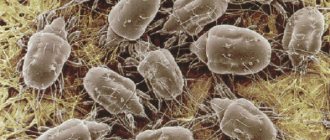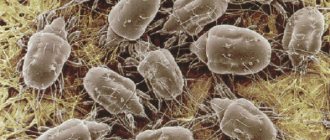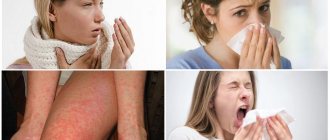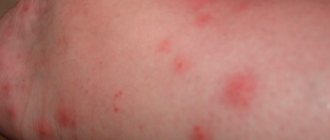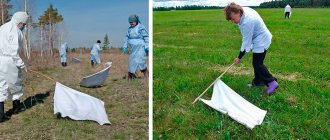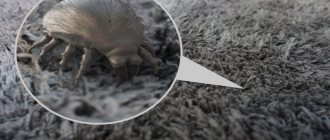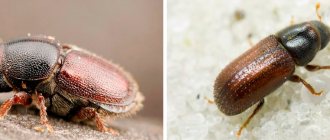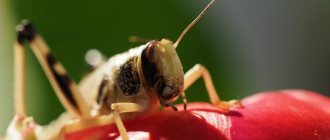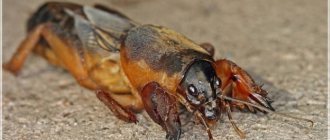Your sleep will not be healthy and relieve fatigue if you have pillow mites. It is impossible to see them on your bed with an ordinary glance. Dust, down or lint eaters - it is more correct to call them, are found in almost every bed. As a rule, mites live in places where dust accumulates, including pillows, mattresses, and carpets. Most people don't even realize that every night they lay their head on a pillow that is "infested" with mites.
Doctors assure that every sixth child with bronchial asthma suffers from an allergy to feather mites . Sleeping on pillows infected with feather mites is not at all safe, because the mite can crawl into a person’s ear, the parasites themselves can feed on the scales of the epidermis (dead skin), and their excrement corrodes and poisons human skin. As a result, a person actively develops various allergic reactions or a disease, which is popularly called scab.
Description of the parasite, causes of appearance
Ticks belong to the family of small arachnids.
They are divided into two orders: acariformes and parasitiforms. Acariform mites are closer to phalangeal arachnids, while parasitiform mites belong to the class of harvesters. The feather mite (photo presented in the article) belongs to the order Acariformes. The parasite is almost impossible to detect; it has a transparent scaly body, and its dimensions do not exceed 0.5 mm in length. Due to the peculiarities of its structure, it cannot bite a person, however, the protein that it secretes in the process of life can cause an acute allergic reaction.
The main reasons for the appearance of the insect are unsanitary conditions and careless attitude towards personal and bedding. Ticks spread very quickly. It is impossible to completely get rid of them, but you can significantly reduce their numbers.
Habitat
The pests live and breed on birds' feathers, causing them to fall out over time. In residential buildings, feather mites are most often found in pillows (photo below), upholstered furniture, carpeting and places where dust accumulates. However, down and feather pillows are considered the most favorable habitat for the parasite.
Feather base and human sweat combine to create the optimal temperature and humidity necessary for insect reproduction. Most people ventilate the room before going to bed, thereby improving the living conditions of the insect, since fresh air is one of the main components of its life support.
If not properly cared for, any down or feather product will gain weight after a few years due to the accumulation of dust and mites. On average, there are up to 200 individuals for every centimeter of feather pillow. As a rule, parasites get onto human skin from down or feather products, causing clearly noticeable discomfort.
Since it is extremely difficult to completely get rid of feather mites, down and feather filling of bedding is prohibited in most developed countries. This mainly concerns municipal children's institutions, hospitals, sanatoriums, hotels, barracks and student dormitories.
Modern manufacturers give preference to synthetic fillers such as padding polyester and holofiber. It is much easier to care for such products; in addition, the existence of parasites in them is almost impossible. For people who prefer natural materials, bedding with bamboo or coconut fiber, buckwheat, pine needles and even purified meadow hay is recommended. It is advisable to update pillows once a year.
Danger to humans
If treatment is not started in time, feather mites can cause acute allergic reactions or aggravate existing diseases:
- Asthma. The patient experiences attacks of the disease more often.
- Allergies are possible with a severe cough, watery eyes and runny nose. If you eliminate the allergen, you feel better and the symptoms disappear.
- Hives are accompanied by itching, and characteristic pink spots appear on the body.
- Atopic dermatitis - manifested by redness and peeling of some areas of the skin, severe itching is possible. The disease requires long-term treatment.
- Swelling of the airways is the most dangerous possible reaction, as it can be fatal.
Symptoms of presence
The main sign that a large number of mites have accumulated in the pillow is an allergic reaction caused by parasite excrement. Feces contain an antigen that causes the body to react. Sometimes allergies are caused by cuticle particles from dead or shed mites.
Symptoms:
- Watery eyes, swollen eyelids, suppuration of the cornea.
- Redness of the skin, itching, peeling, cracking of the skin.
- Nasal congestion and discharge, sneezing.
- Coughing attacks, shortness of breath, difficulty breathing.
- Attacks of suffocation.
- Hives.
- Decreased appetite, gastrointestinal disorders.
Note! The symptoms of allergies to fungus and mites are similar, so it is recommended to undergo a special test with the direction of your doctor.
If left untreated, symptoms over time develop into conjunctivitis, atopic dermatitis, bronchial asthma, allergic rhinitis, and Quincke's edema. In some cases, fatal swelling of the airways can occur.
Interesting! Dust pests do not bite or feed on humans, and therefore are not capable of transmitting dangerous diseases.
If a person has a weakened immune system, mites will cause acne and pimples on the skin. An allergic reaction may be present only in some family members, which most often affects children.
For reference! Vitamin C helps the body fight allergens.
Test strips will help in determining the presence of parasites . The set contains 10 pieces. Research is carried out this way. Take a little filler out of the pillow, put it in a container, add water and lower the test strip. Or the dust is mixed with water. The color of the strip determines how many ticks are in the pillow.
Fact! After 5 years of use, about half the weight of a feather pillow is dust mite excrement.
What are feather mites?
Feather mites can feel comfortable not only in blankets and pillows, but also in other products consisting of down or feathers. The tick lives for about 80 days, and leaves behind a clutch of eggs, the number of which reaches 60-70 pieces. They live in entire colonies. One gram of dust can contain from 10 to 10,000 individuals. The norm is the presence of up to 100 parasites in 1 g of dust, since this concentration of insects is quite safe for humans.
Dust (feather) mites are synanthropic organisms. They always live next to a person. Ideal conditions have been created here: fairly warm, moderate humidity, plenty of food. Mites often feed on woolen lint in bedding. However, the main source of food is dead human skin cells, of which there are about one and a half grams daily.
Correct treatment
First of all, you need to understand that treatment involves a whole range of actions, each of which will affect effectiveness. It is necessary to remove not only the symptoms, but also to reduce the number of parasites to a minimum, prevent their reproduction, and also use treatment for skin diseases. Treatment is prescribed only after diagnosis and confirmation of the diagnosis; it is individual for each individual case, taking into account the degree of infection.
The patient is prescribed special ointments that help fight mites and at the same time have a beneficial effect on the skin; therapy also involves the use of vitamins, and possibly the use of antibiotics. The course of treatment will always depend on the stage of development of the disease, on average it is two weeks.
What does a feather mite look like? Photo under a microscope
Few people know that feather mites are individuals belonging to the group of pests Dermatophagoides (dust parasites). They are characterized by a body length of 0.1 to 0.5 mm. This allows them to remain undetected for a long time. Moreover, in a dream, when a person’s head is on the pillow, there are no external sensations. Even the appearance of a large number of pests does not cause discomfort during rest.
If you are wondering what ticks look like in pillows, you need to consider that they move using 4 pairs of limbs. Moreover, there are suction cups and claw-like protrusions on the legs. This allows pests to stay on the fluff of the fluff. The body of parasites is oval, convex.
These mites have powerful mouthparts
(consisting of claw-shaped chelicerae), thanks to this, pests chew through particles of dead epidermis.
Feather mite under a microscope. Feather mites have powerful mouthparts Photo of a feather mite under a microscope
Microscopic inhabitants of pillows
Mites that live in feather pillows are not related to the parasites that live on birds. This is a separate species - Dermatophagoides or house dust mites. Their sizes are 0.1-0.3 mm, so we don’t even notice the presence of millions of arthropod creatures. When viewed through a microscope, an oval, convex body covered with bristles and four pairs of legs are visible. There are suction cups on the limbs with which the tick clings to the surface. At high magnification, you can see powerful chelicerae - claw-like appendages with which dust mites gnaw particles of skin.
Attention. According to scientists, colonies of arachnids make up about 80% of the dust in an apartment.
Dust mites belong to the class of arachnids, the order of acarimorphic mites. The peculiarity of this group is the ability to feed on hair, feathers, skin secretions and particles. 150 species of mites have been found in house dust. Dermatophagoides pferohysimmus and Dermatophagoides pteronyssinys play a major role in the formation of an allergic reaction in humans.
A large number of mites live not just in dust, but in bedding. There are several reasons for this choice:
- During sleep, we heat the pillow and bed to a comfortable temperature of +25-300, which is preferred by arachnids.
- Skin secretions cause increased humidity.
- A large amount of human epidermis remains in the bed, on which ticks feed.
Information. Arthropods that live in dust and bedding do not bite humans or suck their blood. They are not carriers of dangerous diseases like the Ixodid species.
How do ticks get into the house? They can be carried on clothing, when pillow filling is not properly treated, or on pet fur. The lifespan of parasites is 65-80 days. During this time, the female manages to lay 60-200 eggs. Arthropods spend most of their lives feeding on human remains. They defecate up to 20 times per day. Excrement is the main cause of allergic reactions in humans. If you consider that millions of individuals live in bed, then it is clear what kind of load is placed on the immune system.
Attention. Without washing, a feather pillow over a period of 5 years consists of 50% of its weight from dust, skin secretions, mites and their waste products.
Harm from mites in bedding
Without examining bedding using a microscope, it will not be possible to identify unwanted neighbors - their sizes are so small that they are not visible to the naked eye.
Colonies of microscopic insects, fungi and bacteria inhabit any dusty corners of the apartment, actively growing on bed linen, in the thickness of pillows and mattresses, in the pile of the carpet and soft toys.
It is almost impossible to get rid of them once and for all, but this is not a reason to completely ignore the problem. Acarids cannot cause direct harm to humans, because they do not feed on blood through bites, but on exfoliated skin flakes, particles of sweat, dandruff, and sebum. But their excrement poses a serious threat.
The size of an adult varies from 0.1 to 0.5 mm, and its waste products are even smaller. During the digestion process, ticks have to produce large amounts of enzymes that break down the human epidermis.
Practice shows that people who love space, who toss and turn in their sleep and who have respectable dimensions are satisfied with the size of a single bed.
Almost every car bed model has a trunk box, which is suitable for storing bed linen and pillows. There are voluminous crib bodies that replicate the silhouettes of real cars, with spinning wheels made of soft plastic. Details here.
Fecal pellets left by insects contain these components in high concentrations. They are the main threat to the human body.
Getting on the mucous membranes when breathing, settling on the skin, attacking the eyes and polluting the lungs, the active substances cause serious disturbances in the respiratory system, irritate the skin, and can cause impairment of vision and smell.
The most common diseases and symptoms, the invisible cause of which are mites in pillows:
- allergies accompanied by rhinitis, conjunctivitis and asthma attacks;
- atopic dermatitis;
- swelling of the respiratory tract, trophoneurotic edema or urticaria (Quincke's edema);
- up to 70% of diagnosed cases of bronchial asthma.
With a reduced immune barrier, they can cause skin irritations, acne and deep infections - other mites (for example, demodex) that parasitize directly in the human body can penetrate into microdamages in the skin formed under the action of enzymes.
Symptoms of the presence of dust mites
Typically, if the number of dust mites is below average, symptoms may not appear at all. After all, for thousands of years, when such insects were not known, people had no idea about such a “neighborhood.” However, if there are 500 or even 1000 individuals per 1 millimeter, this can cause a lot of problems:
- bronchial asthma;
- rhinitis;
- dermatitis;
- conjunctivitis;
- respiratory allergy.
Of course, most people don't pay attention to the presence of dust mites. However, under certain circumstances it is still worth paying special attention to. For example, if you notice constant nasal congestion, frequent sneezing, itching of the mucous membrane. If the nose is constantly stuffy, a person breathes through the mouth. In this case, the brain does not have enough oxygen, which causes headaches. Other symptoms that may be a cause for concern include:
- redness of the eyes;
- swelling of the nasal mucosa;
- swelling of the eyes and severe watery eyes;
- itching of the palate;
- wheezing in the chest;
- heavy and difficult breathing;
- dry cough;
- skin irritation: redness, burning, peeling, itching.
If these symptoms begin to appear, it is recommended to take action. After all, inaction will only aggravate the situation. After all, world practice knows situations where dust mites have caused serious illnesses with fatal outcomes.
The danger of a linen mite bite
Dust mites in pillows find themselves in greenhouse, extremely favorable conditions. Thanks to human sweat and the hygroscopicity of the materials used for bedding, an optimal humidity level is maintained inside.
The constant warm atmosphere of the bedroom is just as pleasant for microinsects as it is for people. And periodic drafts and ventilation only add comfort - they really love the flow of fresh air.
The colony multiplies very quickly, and there is more and more waste. Any mattress or feather product without proper care can double its weight in 5 years - that’s how much dirt, microorganisms and fungi accumulate there.
So it turns out that instead of proper rest, a person each time receives an increased dose of toxic allergens, inhaling them throughout the night. Moreover, symptoms and discomfort may appear 10–20 minutes after the start of contact with the bed.
And by the morning the result is manifested in all its glory - redness of the eyes, swelling of the face and mucous membranes, difficulty breathing, headache and scratching on the skin.
Hygiene standards in many countries do not allow the use of feather and down bedding. Such rules apply especially harshly to children's institutions, hospitals, hotels, hostels and other similar institutions.
The reason for the ban is the impossibility of complete and irreversible destruction of parasitic colonies of bed mites inside the product.
When purchasing bedding, it is better to give preference to fillers such as silicone, holofiber, padding polyester, and other synthetic materials. They are less susceptible to colonization by microorganisms, and caring for them is not so labor-intensive. From natural materials, you can choose bamboo or coconut fibers, buckwheat husks, and hop cones. As a summer cottage option, meadow hay is quite suitable - it is only important to ensure that no poisonous herbs or plants that cause allergic reactions are included in the collection (see Which filling is best for pillows).
It is advisable to change any pillows after six months (maximum a year) of regular use, especially for those stuffed with natural materials. This measure will most effectively protect against problems caused by proximity to ticks.
If this is not possible, then you can at least try to reduce the number of parasite colonies and get rid of their waste products.
Harm to humans
It is not the feather mites themselves that pose a danger to human health, but their metabolic products. Insect feces contain special food enzymes Der p1 and Der f1, which break down particles of the epidermis and hair. It is these proteins that are the strongest allergens.
Conjunctivitis
Therefore, feather mites in humans cause:
- bronchial asthma;
- atopic dermatitis;
- rhinitis;
- conjunctivitis
However, any treatment will only bring temporary relief. Until the allergen is eliminated from the apartment, health problems cannot be avoided.
How to deal with ticks in bed
Everyone knows that hygiene is the key to health. This rule turns out to be effective in any situation, and the problem with bed parasites is also partially solved by observing sanitary standards.
Frequent washing and obligatory ironing of pillowcases with a hot iron will help get rid of unwanted “tenants” on the surface. But deep cleaning will require more significant effort.
In hospitals or hotels, bedding should be processed in autoclaves - exposure to high temperature and pressure effectively destroys not only adult ticks, but also tick eggs.
Unfortunately, this approach greatly spoils the appearance of the products and requires special equipment, so it is not applicable at home. And public institutions often neglect the rules, so on a business trip or on vacation it is safer to purchase a small personal pillow than to use the one provided by the hotel.
As a last resort, you can sleep on an inflatable pillow - its surface is easy to clean and disinfect, so insects have no chance.
Feather mites in pillows can be destroyed by taking them outside at least once a month - the sun or frost will do the job perfectly. It is important to take into account that such temperature treatment cannot be short; 1 hour will not play a significant role.
A product with down or feather filling should be frozen for 24 hours, periodically shaking and fluffing (see Cleaning feather pillows). The sun's rays and a temperature of 40 degrees act slower than frost; you will have to fry for 2-3 days. The advantage of such procedures is that in 2–3 hours, under the influence of ultraviolet light, allergens are decomposed and neutralized.
A significant disadvantage is that sunbathing and street ventilation will only bring a temporary effect, since the adult individuals will die, but the eggs, which are very resistant to changes in external factors, will survive.
To reduce the contamination of the bedroom, it is necessary to carry out regular wet cleaning, dust in all accessible places, wash the floors and wipe the furniture with a strong saline solution (200 g of salt per bucket of water).
Any bedding, mattress covers, as well as fleecy bedspreads, blankets, pajamas, housecoats should be washed and shaken out as often as possible, and it is best to dry them in the sun - this will remove most of the acarids and their metabolic products.
Standard euro size of a single bed: length 200-210 cm, width 90-100 cm. All necessary accessories in European countries are produced in accordance with these measurements.
Removable bumpers for children's beds are very convenient because they can be removed at any time, and then the bed will return to its original appearance. Read a description of the types and designs of protective sides here.
For greater washing efficiency, you can use various acaricidal substances and additives. Easy to use sprays for upholstered furniture and fabric surfaces, additives to washing powder that neutralize mites and allergens produced by them.
As a rule, products with synthetic padding are easy to wash and dry quickly, so they are safer than feather and down ones.
How to get rid of ticks in pillows
It is impossible to completely exterminate all ticks, but you can try to reduce their population. The oldest and most proven method is called temperature exposure.
Pillows and blankets can be taken out into the cold in winter or warmed up in direct sunlight in summer. The period of such exposure should be long, preferably several days in a row.
Effective drugs
Mites on bedding can be easily eliminated by washing and carefully ironing. You can treat furniture and pillows with a steam cleaner, but the downside is that steam only kills adults and does not affect eggs and larvae.
Today there are many special acaricidal drugs that can cope with large numbers of ticks.
Akaril is available in liquid or powder form for cleaning carpets and washing bed linen. It can also be used to treat upholstered furniture and mattresses, but first dissolve it in water. According to users, the product is not bad, but it cannot clean the filling of pillows and feather beds. The advantage is that the product has a completely natural composition.
The cost of a 240 ml bottle is 2,700 rubles, and it is enough for 12 washes.
Allergorr is an excellent Polish spray to combat dust and feather mites. It is enough to spray it over the entire surface of the apartment, on pillows and bedding. The duration of the drug is up to 7 months.
According to reviews, Allergorr is considered one of the most effective products, without an unpleasant odor, and does not cause allergies when used. The price of a bottle (400 ml) is 1300-1700 rubles.
Another spray from the same series is the Swiss drug Milbiol. Users have only positive reviews of it, because it is enough to spray it on carpets, furniture, pillows and blankets. The product has a pleasant smell and does not cause allergic reactions. For a bottle of spray (250 ml) you need to pay only 130-150 rubles.
Folk recipes
In addition to chemical sprays, folk remedies are also used to combat ticks. They are safer, non-toxic, and do not harm pets or people. Although, acaricidal drugs are much more effective than traditional recipes.
You can prepare a lotion from water and tea tree oil, with the addition of a couple of drops of Eleutherococcus tincture. Before going to bed, apply the lotion to the skin of the face and neck, wipe the body.
This will repel parasites and make the bed safe.
Some housewives advise treating furniture and pillows with regular saline solution. The most modern way to get rid of feather mites is a vacuum cleaner with a HEPA filter.
It not only collects all the smallest particles of dust, but also destroys microscopic mites.
Acaricidal preparations for use in the home
Regular washing of bedding and ironing helps to effectively cope with parasites. But not all fabrics can be washed at high temperatures and ironed. To neutralize allergens and cope with mites at any temperature, a special Acaril liquid is added to the washing machine. The same product, released in powder form, can be used to clean carpets.
Wet cleaning is the main weapon in the fight against dust and its inhabitants. Its effect can be enhanced by adding special All-Rug shampoo to the water. The product is sold as a concentrate and can be used to clean natural and synthetic pile of furniture and carpets. It is used in a washing vacuum cleaner and for manual cleaning. The drug is diluted 1:30 in the first month, then a solution of 1:60 is sufficient. The product removes dirt, allergens and mold well, and has a pleasant aroma.
The Allergoff line of products is an acaricidal additive for washing bed linen and a spray. One sachet of Allergoff rids laundry of mites and their waste products. It also works against fleas and can be used to wash pet bedding.
Allergoff spray is capable of destroying parasites at any stage of development. The aerosol form makes it easy to treat mattresses, blankets, carpets and upholstered furniture. The action of the acaricidal drug causes the death of mites in down pillows 1 hour after spraying. Bedding must be treated from all sides. The product is safe for people; objects can be used 1 hour after its application. The active components of the drug are placed in special capsules, their effectiveness is 6 months. The spray is odorless and does not leave stains after use.
Spray "Akarosan" when sprayed, penetrates into the body of dust mites when feeding and through the chitinous shell. The main active ingredient of the drug is benzyl benzoate. The spray enlarges arthropod excrement, allowing it to be collected with a vacuum cleaner. Particles of the drug remain in the structure of the treated surface for a long time. They have a detrimental effect on subsequent generations of ticks. The protective effect of Akarosan is 6-9 months.
Folk recipe
Table salt will help reduce the number of parasites. It is necessary to prepare a solution from it: 200 g of the product is dissolved in 1 liter of warm water. This composition wipes the areas of greatest accumulation of dust mites - baseboards, window sills, shelves. After moistening a napkin in this solution, wipe upholstered furniture, toys, and mattresses. The main advantages of the solution are affordable cost and effectiveness. The apartment is treated 2-3 times a month.
Which pillows do ticks not live in?
Fortunately, nowadays there are many other fillings for blankets, mattresses and pillows that are completely unsuitable for dust mites. The website "Who's Over 30" will tell you about the best of them.
Bio-pillows filled with buckwheat husks
This type of filler is very hygienic; it does not become clogged with dust or parasites.
Such bedding is absolutely not inhabited by insects; dust mites do not live in pillows filled with buckwheat husks, since there is no food for them.
In addition, such bedding is hypoallergenic and has an orthopedic effect.
Hypoallergenic pillows
These are accessories for sleeping and relaxation that are made from 100% natural materials - allergen-repellent wool and 100% cotton.
Such pillows are absolutely airtight, due to which neither dust nor parasites can get into their middle. The service life of such products is up to 10 years!
Caring for them is quite simple - you just need to change the pillowcases every two weeks, wash in lukewarm water, without using aggressive detergents, bleaches or conditioners.
Bamboo pillows
The fiber of this plant has unique natural properties, namely, bactericidal, antistatic, and deodorizing.
Dust mites do not live in such pillows. Bamboo fibers contain a natural antiseptic that prevents bacteria and parasites from multiplying.
About 70% of bacteria that land on a pillow die. It should be noted that over time, the antibacterial properties of bamboo pillows do not weaken, remaining even after numerous washes.
Folk remedies
The use of folk remedies is a fairly popular and even effective technique, which is used very often. For this disease, calendula, namely tincture, shows good results. It is used to wipe affected areas. An equally popular and effective method is to use aloe juice. In this case, the juice is applied to a piece of bandage and applied as a compress. When severe infection is observed, castor oil is used, but it is mixed with Trichopolum and compresses are made every day for up to 10 hours.
Remember that the use of folk remedies requires prior consultation with your doctor, since they also may not be effective, and in some cases dangerous.
How to clean your bed from harmful microorganisms
It is not possible to get rid of ticks completely and forever; the main rule is to keep the house clean and carefully care for bedding.
What will help get rid of dust microorganisms in pillows:
- Ideally, replace down and feather products with accessories with synthetic filling: padding polyester, holofiber, comforter, which must be washed once every six months at temperatures above 50 °C.
- If you don’t want to part with natural materials, or for children, you can choose an alternative with the following fillings: buckwheat husk, bamboo or coconut fiber, latex.
The hypoallergenic properties of buckwheat and the antibacterial properties of bamboo make these materials optimal for children's bedding.
Fans of fluff and feathers can bring out “guests” in several ways:
- Airing the pillows in the air for at least 5–6 hours gives a temporary effect. In winter - in frost, in summer - in direct sunlight. This method does not work for long, since tick eggs are insensitive to heat and cold, only adult individuals die.
- Once a year it is worth disinfecting such products with special dry cleaning products.
- You can also clean the pillow yourself. The bedstead needs to be washed, ironed (or replaced). Down filling - treat with a soap solution (100 g of laundry soap + 100 g of ammonia per 10 liters of water), rinse thoroughly and dry, then put the product back together.
Attention! Regardless of the material of manufacture, it is recommended to change all sleeping accessories every 5–6 years.
It is worth noting that it is impossible to get rid of dust mites by cleaning only the bed linen. Additionally, you need to weaken the provoking factor:
- sort out deposits of soft toys;
- reduce the number of carpets and curtains;
- Follow the rules for storing winter clothes.
How to fight correctly
Of course, when parasites have reached enormous numbers, it will be quite difficult to get rid of them without the use of specialized means. Nowadays there is a huge assortment on the market that allows you to quickly and effectively treat a room and get rid of all types of parasites.
If we talk about the most popular ones, they include the following drugs:
- Digital. Shows good results when treating residential premises. It can be purchased in powder form, which is diluted with water in portions according to the instructions and the solution is treated with the surface.
- Sipaz. Released specifically for residential premises, the advantage is safety for people and animals. It has a prolonged effect, after treatment the effect lasts up to 1.5 months.
- Easy air. This product contains only plant components that have a detrimental effect on ticks.
- Available in the form of a spray that can be used to treat upholstered furniture, carpets, and mattresses.
In addition, there are a large number of sprays containing natural herbal ingredients that are suitable for treating bedding.
Remember that the use of any product must be carried out strictly according to the instructions, and be sure to follow safety precautions. In most cases, when treating a room, you need to leave the apartment for a day and upon return carry out a thorough wet cleaning. When processing bedding, they must be washed.
After sanitization, it is advisable to leave the premises for a day. Then carry out a thorough cleaning using chlorinated products. Wash and steam bedding.
Pillows must be dry cleaned; by the way, this procedure is mandatory and must be done once a year. Dry cleaning uses different cleaning methods, so always check this point.
In the event that it is not possible to dry clean it, you can do it yourself:
- We take a large container and in it prepare a solution of laundry soap and water.
- Next, you will need a bag or a large piece of fabric into which we transfer the contents of the pillow. It is important that the feathers are well separated; they should not be pressed or compacted.
- We tie the bag and lower it into the previously prepared solution.
- Feathers must remain in the solution for at least 4 hours. Every half hour, you will need to knead the contents of the bag and also shake the soap solution.
- Then rinse well in water, preferably running water.
- Hang it outside.
Replacement of down and feather
The times when down pillows were considered the best are in the past. Today there are many fillers in which parasites do not like to settle.
Herbal options include:
- buckwheat husk – elastic, hypoallergenic, with a pleasant aroma;
- bamboo fiber – antibacterial, elastic, breathable;
- latex is elastic, easy to clean, eliminates the appearance of mites and other microorganisms.
Synthetic polyester fillers allow for more frequent hygienic treatment:
- holofiber – non-woven material;
- comfort - elastic polyester balls;
- Sintepon is an inexpensive material, but quickly loses its shape.
When choosing a filler, consider the age and individual needs of the person. For children, it is better to choose natural fibers that do not cause allergies. Ticks that live in pillows do not grow in buckwheat and bamboo.
The best fillings for “pregnant” pillows
Expectant mothers need special comfort while sleeping or resting. Special pillows have been invented for them to support their growing belly at night.
It is better to choose a synthetic material as a filler - it does not cause allergies, which is very important for both mother and baby
Grass Textile Comforel – holofiber balls
4.8
★★★★★
editorial assessment
90%
buyers recommend this product
These soft balls are made of siliconized fiber and have a diameter of 1.5 to 2.5 cm. The filler is produced by a company from St. Petersburg. The material does not accumulate static electricity and does not cause allergies. It is light, soft and breathable.
Advantages:
- keeps its shape perfectly;
- Can be washed multiple times;
- can be pressed in gentle mode;
- durable;
- hypoallergenic.
Flaws:
- requires thorough rinsing, as it produces a lot of foam;
- After washing, the product must be straightened, otherwise it will take a long time to dry.
This filler is suitable for sewing pillows intended not only for pregnant women, but also for nursing mothers.
Theraline – polystyrene beads (EPS granules)
4.7
★★★★★
editorial assessment
86%
buyers recommend this product
This filler is produced by the German company Theraline and is especially recommended for expectant mothers. Small balls with a diameter of only 0.5 mm made of polystyrene are sometimes called “anti-stress balls”. Indeed, they have the ability to calm and relieve tension. The filler is odorless and has an excellent orthopedic effect. A 9 liter package is enough to fill a pillow of any size.
Advantages:
- European quality certificate;
- absolute safety;
- special device included for easy filling.
Flaws:
cannot be washed.
This material is ideal for expectant mothers to relieve stress and have a comfortable sleep.
Can lice live in a pillow?
A louse is a parasitic creature, which means it cannot exist outside the host for a long time (several days), since it feeds on blood. An adult lives for 38 days, managing to lay several hundred eggs. The bites of these insects are painful and itchy, as saliva is simultaneously injected, which prevents blood clotting, which is accompanied by unbearable itching.
A human lice inside a pillow will not survive without food, but it can be found on bedding. But we are not talking about a colony of lice, their vital activity and the laying of nits, but about a short-term stay. If the individual does not return to its owner within 24 hours, it will die.
Linen lice can live in the folds of clothes that are worn for several days in a row, form colonies in secluded seams, lay nits, but also need forays for food.
Important! Lice reproduce only at a temperature range of 22–40 C, and die at 44 ° C. It is recommended to wash bed and underwear at a temperature of 50 °C and iron them.
Main types of house ticks
House ticks are a separate biological group of parasites that live in the residential environment. They not only spoil food, clothing and furniture, but also affect the health of humans and animals.
The following types of ticks can appear and reproduce in the living environment:
- Hairy house tick . This pest lives in flour, grain, plant and animal residues, and even in cheese and tobacco. Such mites actively develop at a temperature of 23-25 degrees and a relative air humidity of 80-90%. They can cause dermatitis in humans;
- Scabies mite (itching) . It develops and parasitizes only on humans in high humidity and warmth. It is the causative agent of scabies;
- Rat mite . The parasite primarily attacks rats, but, in the absence of a natural host, can attack other mammals, as well as humans. Rat mites cause a difficult to treat disease - rat mite dermatitis. This parasite is common in rural areas and poses a danger to its inhabitants;
- Chicken mite . This type of parasite is widespread throughout the world. Mainly lives in nests and droppings of birds, cracks of wooden surfaces. Can parasitize on the surface of human skin, causing skin rashes and irritations;
- Bird mite . This tick parasitizes wild and domestic birds, that is, it lives in close proximity to humans and is capable of attacking them.
Household ticks are dangerous not only because of their bites, but also because of the impact of their own feces on humans and pets.
Do bedbugs live in pillows?
Bedbugs are blood-sucking insects that prefer a warm, draft-free atmosphere. Their bites are painful and can leave marks (droplets of blood) on pillowcases, which help to understand what kind of living creature shares the bed with the owner.
Pillows are not the most favorite habitat of bedbugs; they prefer cozy seams and folds of furniture upholstery or stationary mattresses. These are the places that should be checked first if there is a suspicion of a blood-sucking neighborhood.
Bedbugs avoid pillows for several reasons:
- the large size (4–8.6 mm) does not allow insects to freely penetrate through the thick fabric of the bedspread;
- bedding is often turned over, shaken, etc.;
- Any filler is distributed unevenly inside, making it difficult for bedbugs to move.
USEFUL INFORMATION: How to wash a blanket: camel wool, down, cotton, padding polyester and others
You can get rid of parasites in pillows as follows:
- natural products should be taken to dry cleaning or disposed of;
- synthetic - wash at a temperature of 50 ° C, then dry in the open air.
Bed bugs get into pillows when their population becomes too large and their “favorite” places - sofas and mattresses - are occupied. In this case, you cannot do without general sanitation of the room.
It will not be possible to completely get rid of pests in an apartment, but it is possible and necessary to reduce their numbers by following simple rules, which will help you spend the night hours with pleasure and health benefits.
Preventive actions
To protect your loved ones from allergic reactions and reduce the negative impact of dust mites to a minimum, following simple rules:
- Change pillows and mattresses every 5-6 years. Without proper care, they accumulate a huge amount of mites and mold.
- All bedding, as well as bedspreads, pajamas, and dressing gowns should be washed and shaken out as often as possible. It is recommended to dry these items in the sun.
- Use acaricidal sprays to treat the surface of upholstered furniture, toys, and carpets.
- Regularly carry out wet cleaning of the premises, do not allow dust to accumulate under the bed and in the corners of the room.
- If one of the family members is prone to allergies, it is necessary to remove items from the house that accumulate dust - carpets, drapes.
- Ventilate rooms frequently and maintain humidity at 40%.
- Refuse to store old pillows and mattresses in your apartment and immediately get rid of unnecessary things.
It is impossible to completely destroy dust mites; their population is regularly replenished. But everyone can reduce their numbers and make their home safe.
Caring for feather pillows
You don't have to give up your favorite feather pillows because of mites. They need to be looked after properly. In addition to seasonal drying and freezing, feather washing is recommended. Once every 2 years, pillows are taken to dry cleaning, where appropriate treatment is carried out. You can wash your feathers at home. To do this, you will need a canvas bag the size of a pillow, soap, and ammonia.
The work is performed in the following sequence:
- The feather is poured into a prepared bag, which is tied tightly.
- A special soap solution is prepared in a basin or other container with a volume of 10 liters. You will need 100 g of laundry soap and 100 g of ammonia. After mixing all the ingredients, a bag of feathers is lowered into the container.
- Soaking takes place for 4 hours, periodically the bag is turned over, and the contents are kneaded with your hands.
- Next is rinsing, you will need to change the water several times until all the soap and dirt disappears.
- Fabric with wet feathers is hung in a draft. Washing is done on a sunny day so that everything dries quickly. You will need to wait until it dries completely. In order for the pen to dry evenly, you need to periodically shake it and knead it.
At the same time, the diaper is washed with the addition of an acaricidal drug. Dry fabric is ironed.
What to do with the pillow?
To get rid of mites in feather pillows, it is recommended to clean your sleeping accessories once a year. In a specialized salon, it is important to clarify the cleaning method: mechanical, chemical or water. The quality of washing directly affects the number of harmful individuals.
If you can’t go to a dry cleaner, you can treat the pillows yourself. To do this you will need:
- Pull out the contents of the pillow and transfer it to a fabric bag, do not press. Tie the bag and place it in soapy water made from laundry soap.
- Leave for 4 hours, shaking the water every 30 minutes and kneading the feathers or fluff.
- Rinse under running water.
- Hang in the sun, preferably outside, until completely dry. During drying, knead the contents every hour so that all the filler dries out.
Conclusion
A feather pillow is an environmentally friendly product, so to speak. It has a number of worthy qualities, thanks to which the product served our ancestors for many years. Now scientists are attributing more and more shortcomings to it, proposing to replace natural feathers with a synthetic analogue. However, the point is omitted that synthetic fillers also have a number of positive and negative characteristics.
By choosing a high-quality feather pillow, the buyer receives a natural product that, with proper care, will last a long time.
Sources
- https://FB.ru/article/411724/perevoy-klesch-lechenie-i-simptomyi-u-cheloveka
- https://StopKlopam.com/kleshhi-v-podushkah/
- https://misterklop.ru/klesshi/kleshhi-v-podushkah-perevye-kleshhi-prichina-bessonnitsy-kto-takie-otkuda-berutsya-opasny-li-dlya-cheloveka-i-kak-ot-nih-izbavitsya- foto-pod-mikroskopom
- https://like2sleep.com/postelnye-prinadlezhnosti/podushki/kleshhi-v-podushkakh-kak-izbavitsya-ot-nep.html
- https://dezvredexpert.com/kleshhi/vidy-kleshhej/kleshhi-v-podushkax/
- https://sichovka.ru/parazity/kleshchi-v-podushkah.html
- https://DobryjSon.ru/spalnoe-mesto/uhod/kleshhi-v-podushkax.html
- https://beetlestop.ru/kleshi-v-podushkah/
- https://polzaivredno.ru/perevye-podushki-chem-vredny-i-chem-polezny/
[collapse]
How to detect bedbugs?
Bedbugs are very small insects and it is not so easy to find them in a mattress during the day. Due to their small size, they are able to penetrate inside seams and climb into the narrowest crevices. Bedbugs do not love light, they are nocturnal inhabitants and in order to detect them, it will take a lot of work. And yet there are several signs by which bedbugs can be detected:
— Bed bugs emit a specific smell. Smell the mattress. If you notice an unpleasant specific smell, then most likely bedbugs have settled in your mattress.
— Carefully examine the mattress, look deep into the seams. In the habitat of bedbugs, you can notice light yellow or brown dust - these are the exoskeletons of bedbugs left after molting. Black crumbs can also be seen in the seams - these are bedbug feces.
- Bites. If every night there are more and more allergy-like bites, then you are being bitten by bedbugs.
Preparing the mattress for processing.
Do children need a pillow?
Depends on the age of the child.
Pillows are contraindicated for infants under one year of age. For example, the US National Center for Biotechnology Information directly calls a pillow in a crib a threat to the life of a newborn []: a child, turning over, can bury his nose in it and suffocate. Pediatricians are also unanimous: a pillow is not needed until about three years of age. The fact is that in the first years of life, the child’s spine is straight, all natural curves are just being formed. For this process to proceed correctly, the baby must sleep on a flat, hard surface without a pillow. Some people believe that it is permissible to place a very thin pillow no more than 3 cm high under the head of a baby over one year old.
In some cases, the doctor may recommend that the child sleep on a pillow, but this is usually due to health conditions or congenital problems. In this case, the pillow must be selected together with the pediatrician.
Children over three years old can now sleep on a pillow, but it still needs to be fairly thin. Pillows thicker than 10 cm are recommended only for middle school age children. Watch your child: if his head slides off the pillow during sleep, you should replace it with a thinner one. If the child puts his hand under his head, you can choose a thicker pillow.
The material you need to choose is hypoallergenic: silk, latex or memory foam.
More about the parasite
One of the human companions, the linen or bed mite, lives for several hundred years and is distributed in all parts of the world. He feels comfortable with a person. It feeds on dead skin cells, dandruff, lost hair, hides in the folds of dirty bed linen, in pillows, blankets, mattresses and feels great in a dusty room that has not been cleaned for a long time.
A person does not notice the presence of a bed mite if he has good immunity and does not know what an allergic reaction is.
Sensitive people have it more difficult. Their skin and respiratory organs respond to pest bites with endless runny nose, coughing, sneezing, and skin irritations in the form of a small red rash.
It is possible to examine a bed mite (it is a type of saprophyte) only with the help of a microscope, it is so small.
A tick (as we see it in photographs) looks like this:
- yellow-brown;
- the body is flattened, covered with chitin;
- length – from 0.2 to 0.6 mm;
- six limbs with suction cups;
- head in the shape of a triangle.
An adult tick lives for a month and a half, during which time the female lays more than three hundred eggs.
